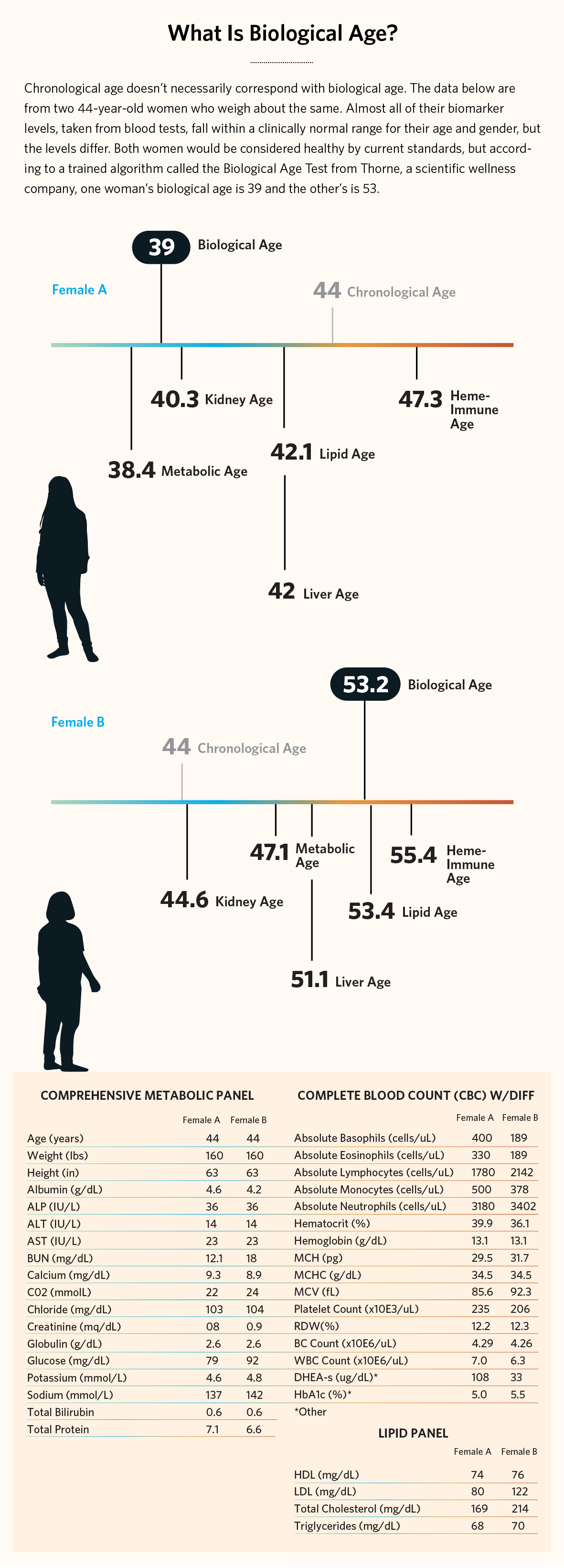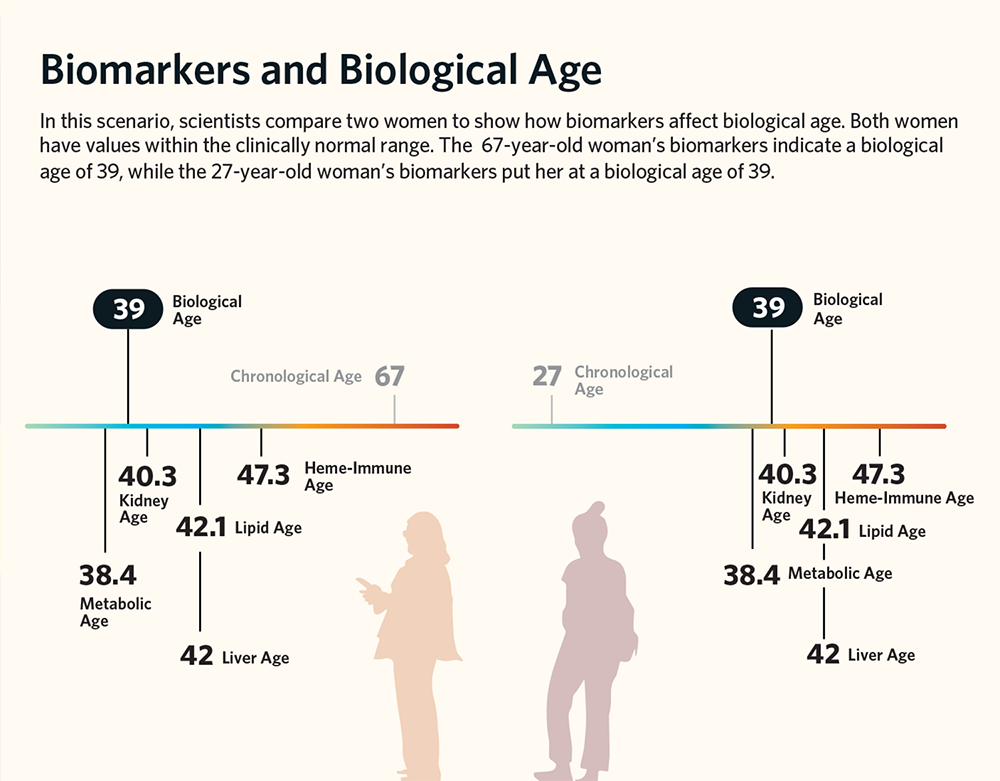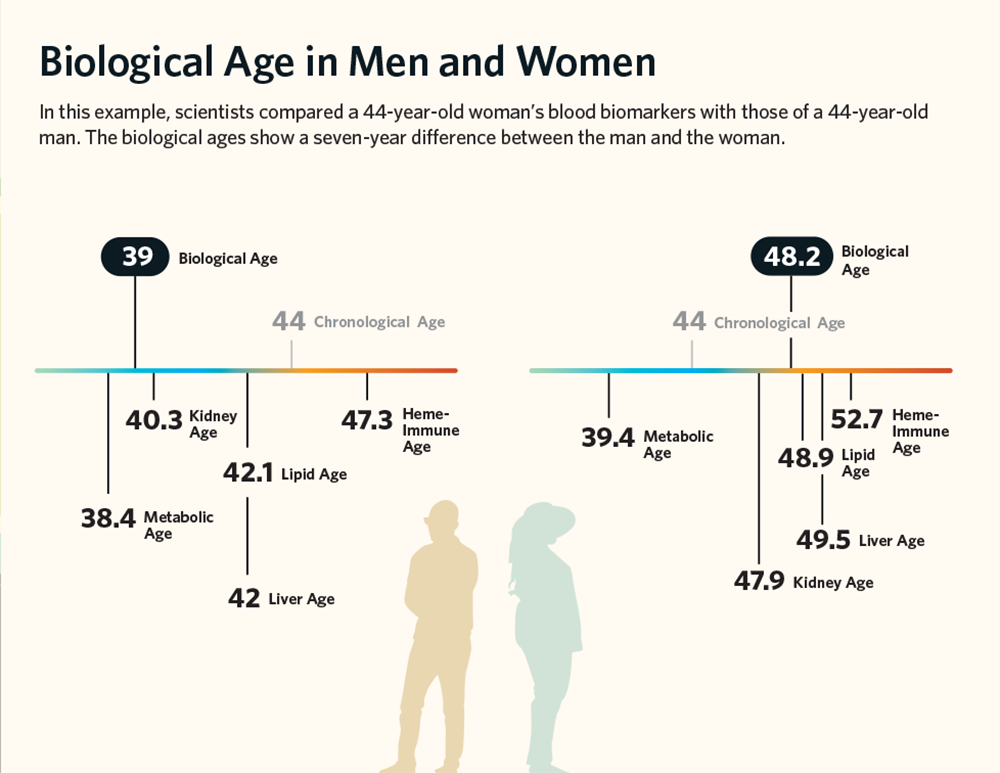Health Transformation Institute (HTI)
digital, health and care transformation
Joaquim Cardoso MSc
Founder and Chief Researcher, Editor and Advisor
December 12, 2022
ORIGINAL PUBLICATION (full version)

Evidence-Based Wellness Emerges as an Industry
A wave of startup companies are offering personalized paths to wellness
Scientific American
By Nathan Price
December 7, 2022
This article was created for Phenome Health by Scientific American Custom Media, a division separate from the magazine’s board of editors.
The ultimate goal for doctors, medical device manufacturers, pharmaceutical companies, hospitals, insurance companies and other health-care organizations is to help each of us lead a longer, healthier life.
But at present, incentives in the industry put too much emphasis on treatment and not enough on wellness and prevention.
Only about 3 percent of the $4 trillion spent by the U.S. medical industry is currently spent on prevention.
Only about 3 percent of the $4 trillion spent by the U.S. medical industry is currently spent on prevention.
Recent advances in scientific wellness offer a way to extract more benefits from this investment.
But science alone isn’t enough.
Delivering targeted interventions that extend the health-span-the number of years a person lives in good health-of millions of people requires translating scientific discoveries into a wellness industry.
Delivering targeted interventions that extend the health-span-the number of years a person lives in good health-of millions of people requires translating scientific discoveries into a wellness industry.
In recent years, a wave of start-up companies have begun to do exactly that.
Dozens of firms are now offering aspects of what could eventually grow into an ecosystem of businesses and organizations that provide all the steps in the process of keeping each of us healthy.
These steps include administering tests that yield data relevant to an individual’s state of wellness, interpreting that data, and providing safe and effective interventions to stave off disease.
These interventions can be as simple as making it easier for people to choose foods that help them maintain their health, rather than sugary drinks and fries, as well as more targeted actions such as optimizing levels of a vitamin or administering a drug.
Unlike much of the current wellness industry, these interventions must be rooted in science, personalized to the individual and trackable in a way that makes it possible to measure the results over time.
Dozens of firms are now offering aspects of what could eventually grow into an ecosystem of businesses and organizations that provide all the steps in the process of keeping each of us healthy.
Unlike much of the current wellness industry, these interventions must be rooted in science, personalized to the individual and trackable in a way that makes it possible to measure the results over time.
Although the scientific wellness industry is still in its infancy, a great deal of progress has been made in all three areas: testing, interpreting and intervening.
Although the scientific wellness industry is still in its infancy, a great deal of progress has been made in all three areas: testing, interpreting and intervening.
Outline of the publication
- Personal Data
- Turning Tests into Action
- Lifestyle and behaviors
- Safety First
- Challenges and Promise

Personal Data
An important part of the testing infrastructure for scientific wellness is already in place.
Numerous testing platforms give insights to individuals or their health-care practitioners to help improve wellness.
The vast majority of U.S. adults live within a short drive of labs that can take measurements from blood, which track disease risk factors such as hemoglobin (HbA1c), LDL and HDL cholesterol, thyroid markers, hormone levels, as well as accumulated biotoxins such as lead, mercury or PFOs.
Some firms are now offering products to make more effective use of data from these standard tests.
Inside Tracker, WellnessFx, and others use these kinds of biomarkers to provide personalized insights into nutrition and lifestyle choices.
Biological age-the age your body says you are as opposed to the age the calendar says you are-can provide insights into the health of different organs and biological processes via common clinical blood measures, such as with the test we developed at Thorne HealthTech.
Another way is to use epigenetic methylation markers on DNA, which can be obtained from a test called myDNAge.
One way to make testing more effective is to make the data collection as easy as possible.
For example, at Thorne we recently developed a “microbiome wipe” that makes collecting a stool sample as easy as using toilet paper, replacing the old “poop and scoop” approach that consumers dislike.
Other start-ups are bringing testing now available only in labs or in the doctor’s office to the individual.
Blood samples can now be collected at home simply, and nearly painlessly, with devices such as the OneDraw or Tasso.
These samples can be paired with commercial health labs for compatible health tests.
A device for the home, such as the COR, can provide immediate feedback based on infrared spectroscopy from blood samples, which would be useful for monitoring responses to interventions or behavior changes and measuring the magnitude of change.
Genetic testing provides a fundamental basis from which to guide personalized scientific wellness.
Ancestry, 23andme, and other firms have now performed genetic tests for more than 30 million people, providing insights into genetic predisposition to diseases, how well an individual metabolizes caffeine, and more.
Many companies provide health advice based on genomics.
For instance, 3×4 Genetics produces genetic reports intended to be interpreted with guidance from a physician.
And Self Decode provides personalized diet and lifestyle plans, informed by genetics, directly to consumers, or included in comprehensive health programs.
Much more needs to be done to make genetic testing more widely used and effective.
Although getting access to a genome is as easy as swabbing your cheek and sending it for a commercial test, greater insights will come when we can integrate genomic data with other types of data, such as blood measurements.
An individual’s genes can predict how successful they will be in lowering their LDL cholesterol through lifestyle interventions, for example.
This kind of analysis must be spread across all kinds of health measures if we are to provide each individual with a personalized blueprint for improving health.
An individual’s genes can predict how successful they will be in lowering their LDL cholesterol through lifestyle interventions, for example.
This kind of analysis must be spread across all kinds of health measures if we are to provide each individual with a personalized blueprint for improving health.
Wearable devices have great potential to provide data that can contribute to wellness.
The Apple Watch, Fitbit and other products now provide information on activity, sleep, heart rate variability, and more.
Such data can be integrated across many devices through Apple Health or CommonHealth on Android phones.
Continuous glucose-monitoring devices, such as the FreeStyle Libre or Dexcom, provide real-time feedback on how blood sugar levels rise after eating different foods.
Continuous glucose-monitoring devices, such as the FreeStyle Libre or Dexcom, provide real-time feedback on how blood sugar levels rise after eating different foods.
It’s now possible to get a great reading on how well your body controls sugar, a key metric for metabolic health, which is probably the number-one driver of health throughout life for most people.
Wearable technology still has a way to go to reach the full potential of scientific wellness.
Wearable technology still has a way to go to reach the full potential of scientific wellness.
Wearables need to encompass an ever greater set of measurements, noninvasively and comfortably, than they do now.
For example, devices can now provide continuous monitoring of glucose levels in the blood, but they cannot combine them with measurements of insulin, which would have a big impact on health.
Devices also must be able to monitor a much wider range of compounds.
No device can accurately and passively monitor the intake of calories, for example.
For example, devices can now provide continuous monitoring of glucose levels in the blood, but they cannot combine them with measurements of insulin, which would have a big impact on health.
No device can accurately and passively monitor the intake of calories, for example.
Another way devices can be improved is to more deeply tie noninvasive and passive daily measurements to predictions of important health conditions.
While lab tests are good as a “snapshot,” tests of balance, vision, cognitive ability and other functions fill out the picture and are an important way to monitor and improve wellness.
Brain health monitoring is also important for healthy aging; cognitive training tools such as Posit Science’s BrainHQ, supported now by studies reported in more than 200 scientific papers, can make a big difference.
Continuing integration of such approaches with deep molecular measurements will provide deep insights into the relationship between behavior, nutrition and healthy functioning of the brain.
Brain health monitoring is also important for healthy aging; cognitive training tools such as Posit Science’s BrainHQ, supported now by studies reported in more than 200 scientific papers, can make a big difference.
Continuing integration of such approaches with deep molecular measurements will provide deep insights into the relationship between behavior, nutrition and healthy functioning of the brain.

Turning Tests into Action
The next step in scientific wellness is to turn testing data into meaningful insights that can enhance wellness and help each of us to work towards health goals.
The two main ways of gaining this insight are through human experts and guided AI-or, more commonly, a combination of both.
The key objective is to make the observations actionable for individuals.
Since the biology behind scientific wellness decisions can be complex, this is no easy task.
The important thing is to make sure that the cognitive burden of this complexity does not fall on the individual-neither the patient nor the doctor-but rather is absorbed in data analytics by whatever company or organization is providing the service.
Providers must deliver simple and clear recommendations, backed by evidence that patients and doctors can understand, even when that evidence is hugely complex.
Simplicity and transparency are essential for the credibility of the feedback individuals get.
At present, too often companies in the wellness industry skip this step and cater instead to people looking for easy answers.
This practice has left consumers in the difficult position of having to determine whether a company’s claims for a test or intervention are evidence-based or hucksterism.
When a product claims to have broad positive effects on practically everything, that’s a red flag.
Focusing on trusted brands with long track records or those with high-caliber scientists involved is critical.
The same holds for test interpretations aimed at physicians or other health-care professionals, who then provide solutions to their patients.
Doctors have a great deal of expertise in their domain, but they can’t know everything about every genetic variant and blood marker and the intricate relationships among them.
Most important, practitioners generally have tight time constraints when dealing with patients and only see them occasionally.
Scientific wellness can play a major role through continuous interaction with individuals as they focus on maintaining and enhancing their health throughout their life.
And since medical research focuses on disease, wellness science can fill a big gap in data for people who are basically in good health.
The analysis of the data sets of scientific wellness must lead to simple summaries and clear actions, so the doctor can communicate efficiently and effectively with the patient.
The analysis of the data sets of scientific wellness must lead to simple summaries and clear actions, so the doctor can communicate efficiently and effectively with the patient.
The AI that assists in these interpretations must surface the most relevant and pertinent information when it matters most.
The logic behind its recommendations needs to be understandable to a doctor or consumer and cannot just be a black box like search and recommendation algorithms.
Transparency makes it possible to integrate the AI with the judgment of experts to know when there might be exceptions or additional context that falls outside the scope of the AI’s algorithms.
Many companies are developing tools to interpret data and suggest personalized actions to improve health.
Some focus on behavioral change, such as Levels and Noom.
Others, such as Thorne HealthTech and DayTwo, interpret microbiome tests to make recommendations about lifestyle, diet and nutrition.
Other firms, such as January.ai and NutriSense, provide insights based on continuous glucose- monitoring data. Apps such as Welltory and Humanity integrate digital health data to provide insights.
An exciting development is the use of a “digital twin” as an in silico representation of an individual’s specific biology.
In principle, clinicians or companies can use them to make predictions of the effects of interventions on the individual and represent the variability of response across large populations.
The combination of digital twins that represent individual biology with machine learning from patient data provides a powerful approach to deciphering the complexity of wellness and disease.
For example, Thorne HealthTech has partnered with a start-up digital twin company, EmbodyBio, to build a detailed predictive model of how the brain maintains its health, integrating data from more than 900 scientific papers.
We used this model to perform 10 million digital-twin simulations and compared these against 30 human clinical studies, matching closely the age at which people develop Alzheimer’s disease based on a host of genetic and lifestyle risk factors.
To best serve individuals, the entities that collect data and interpret it must be able to share data with one another, including a combination of scientific wellness data and the disease-focused data from health-care systems.
Although the ability to share data is improving as health care moves from the clinic to the smartphone, it is still difficult to bring it all together.
Companies like Particle Health and Seqster are working on the interoperability and shareability of information on many different platforms, including traditional electronic health records.
These kinds of systems are critical as you move from place to place, and job to job, so that individuals don’t lose the continuity of their health-care data as they move through life.
Companies like Particle Health and Seqster are working on the interoperability and shareability of information on many different platforms, including traditional electronic health records.

Lifestyle and Behaviors
Testing and AI-assisted recommendations must lead to concrete solutions that clinicians and providers can present as specific interventions.
Scientific wellness is predicated on the idea of not being reactive to disease, as is most health care today, but being proactive in a way that enhances wellness and resilience, and that reverses disease transitions at their earliest, and simplest, stages.
Because we are talking about interventions aimed at improving health in people who are not suffering from disease, any side effects of scientific wellness interventions must be minimal.
Intervening before disease develops is more than simply gathering data and making recommendations.
Those recommendations will not be effective unless they are carried out. This gets us into the realm of lifestyle and behaviors.
Those recommendations will not be effective unless they are carried out. This gets us into the realm of lifestyle and behaviors.
The wellness industry, and society in general, must make healthier decisions easier-they should be the default decisions in as many situations as possible.
Experience and many studies have made it clear that willpower alone, though effective for some, will not succeed for most.
Wellness firms must focus on providing solutions that people enjoy and help to make environments in which healthy options are easy to choose.
Information alone is clearly not enough to motivate people to change their behavior or to achieve major improvements in wellness across a population.
No wellness company that focuses on trying to get people to give up things they enjoy in favor of things they don’t enjoy is likely to succeed at scale over time.
Solutions for scientific wellness must come through making products that enhance healthy living, easier to access and more affordable.
Information alone is clearly not enough to motivate people to change their behavior or to achieve major improvements in wellness across a population.
No wellness company that focuses on trying to get people to give up things they enjoy in favor of things they don’t enjoy is likely to succeed at scale over time.
There are many consumer products that drive disease and poor health.
Profit-driven food companies that optimize their products to sell have invested in processed foods that are addictive, hitting the brain’s pleasure center with sugars, salt and fats.
A great deal of optimization and research have gone into identifying how to make these foods as hard as possible to stop eating.
We need products that do the opposite.
Part of this will involve educating consumers not to buy products that lead to poor health outcomes-and indeed this consumer pressure is mounting.
There are now major initiatives in the food industry aimed at simultaneously solving for these three key traits: delicious, affordable and nutritious.
For example, Olipop has taken one of the unhealthiest categories-sugary sodas-and created botanical sodas.
These drinks have many of the same flavors, but instead of 40 grams of sugar per serving with no fiber, they have two to five grams of sugar per serving, offset by nine grams of fiber.
The difference shows clearly on a glucose monitor: a regular soda causes a major spike in blood glucose, while Olipop barely causes a rise at all and can help get sufficient fiber into a person’s diet.

Safety First
The safety threshold for intervening in otherwise healthy people is much higher than for treating people who are already sick.
This puts a burden on scientific wellness companies more akin to food companies than those in the pharmaceutical or medical device industries.
Precision interventions to improve healthy aging require a higher safety threshold than interventions developed for late-stage disease.
For this reason, scientific wellness won’t use the kind of drugs aimed primarily at late-stage disease.
Implementing an intervention with serious side effects might be warranted and chosen for someone with a serious disease, but clearly not with individuals who are for the most part healthy.
Implementing an intervention with serious side effects might be warranted and chosen for someone with a serious disease, but clearly not with individuals who are for the most part healthy.
This means we need to develop interventions that can be deployed with specificity and with low or no side effects.
Although particularly safe drugs show promise for use in wellness and to improve aging-metformin, for instance, is currently under study in the Targeting Aging with Metformin trial led by Nir Barzalai, the head of the Institute for Aging Research at the Albert Einstein College of Medicine and scientific director for the American Federation for Aging Research.
Many of these targeted interventions are likely to come from natural products guided by testing and personalized insights.
Of course, just because something is in the natural world doesn’t necessarily make it safe, and nutraceuticals (nutrients that can also be used as medicines) can have strong biological effects.
But the focus should be on those natural products that the Food and Drug Administration can categorize as Generally Recognized as Safe (GRAS) or those that can be submitted to the FDA for classification as a New Dietary Ingredient.
Natural products can be used in the context of scientific wellness.
This is a major area of interest to my company, Thorne HealthTech, which produces some 200 of these now, and many other companies operate in this space.
Numerous studies have shown the effects of natural compounds, such as berberine, an analog of metformin, on improvement of metabolic health, control of lipids, and disease prevention.
Numerous studies have shown the effects of natural compounds, such as berberine, an analog of metformin, on improvement of metabolic health, control of lipids, and disease prevention.
Another example is nicotinamide riboside, which has been shown to extend health-span in animal models.
Functional studies in humans have shown that it boosts the production of NAD+, a coenzyme found in every cell in the body, but which declines with age. Time will tell whether the same effects on health-span will translate to humans.
A probiotic based on Akkermansia, a gut microbe, available from Pendulum, was shown in a randomized, placebo-controlled trial to improve glucose control after meals and reduce levels in the blood of HbA1c, a diabetes marker.
Many molecules identified in human and animal studies as being potentially associated with healthy longevity have yet to be commercialized and need to go through studies and trials.
Mining compounds from the natural world offers big opportunities to find new wellness-promoting intervention strategies.
Doing this well requires a combination of expertise in collecting plants, extracting compounds, and analyzing them.
For instance, companies such as Enveda Biosciences and Brightseed are using mass spectrometry on medicinal plants that have been used by humans, in some cases, for thousands of years, generating data on millions of new natural compounds.
Albert-László Barabási, a professor at Northeastern University, and his team have amassed a complex network of compounds found in food.
They have created a tool, FoodMine, that uses natural-language processing to search the scientific literature for compounds in foods.
Using technology to learn more deeply what exists in the natural world-and building deliverable products from these discoveries-holds tremendous promise for wellness.

Challenges and Promise
Although many startups have made good progress in bringing wellness out of the lab and into the marketplace, the business is still in its early stages.
Many challenges still need to be worked out.
Fulfilling the promise of wellness will require a great deal of additional investment.
Established and reputable sales and business channels are needed.
This can be especially challenging for start-ups that have exciting new technologies but struggle to find the sales channels needed to connect with consumers, many of whom are unaware of the benefits these new products could bring.
Data privacy is another challenge.
To strike a balance between privacy and access to data, the individual must be the central connector for all their data and in control of how it’s used and shared.
Apple Health, CommonHealth and other apps make this easy in some cases, giving the user a single button for controlling what data the apps can share and with whom.
Gathering all this health data requires connecting the data that wellness companies collect with electronic health records that now house most disease data.
Bridging these worlds is a huge opportunity to discover new insights into wellness.
Companies that specialize in integrating biological data, such as LifeOmic, Seqster, G42 Healthcare and CareEvolution, as well as efforts spun out of most of the large health-care providers, are building the software infrastructure for doing so.
Medical data is still largely guarded among competing commercial interests and sequestered by various health-care systems in the U.S.
Countries with single-payer health-care systems, such as the U.K. and Israel, and more open data sharing are generally further ahead in this regard.
The industry also needs to reach a critical mass.
As businesses provide more people with the tools of scientific wellness, scientists will have more opportunities to collect data and use it to come up with new insights.
At present, scientists have to use large longitudinal, multifaceted studies that gather data in ways that protect individuals’ privacy, but at the same time allow scientists to tease out useful information about wellness and disease.
For example, these types of data have helped us make many discoveries about the health effects of the microbiome, such as how much of the diversity of the gut microbiome is reflected by compounds that get into the bloodstream, how differences in the gut microbiome are predictive of success in weight loss, how the microbiome predicts the efficacy and side effects of statin use, and how the microbiome of a person becomes increasingly unique over time, if they age in a healthy way.
As businesses succeed in delivering meaningful results that keep people coming back, and the number of people who interact repeatedly in scientific wellness programs grows, such studies will become more common, creating a positive feedback loop that will only make the benefits of wellness science more apparent.
The idea of fostering wellness dates back to ancient practices designed to meet our universal needs: eating nutritious food, practicing meditation and yoga, and engaging in strength training and aerobic movement.
But bringing the practice of wellness into the scientific realm, where we can measure and assess its effectiveness, is only now beginning.
Although the business of scientific wellness is still in its early stages, it is an exciting time.
But bringing the practice of wellness into the scientific realm, where we can measure and assess its effectiveness, is only now beginning.
Although the business of scientific wellness is still in its early stages, it is an exciting time.
About the author & affiliations
Nathan Price is Chief Scientific Officer of Thorne HealthTech and codirects the Hood-Price Lab for Systems Biomedicine at the Institute for Systems Biology.
Originally published at https://www.scientificamerican.com.












